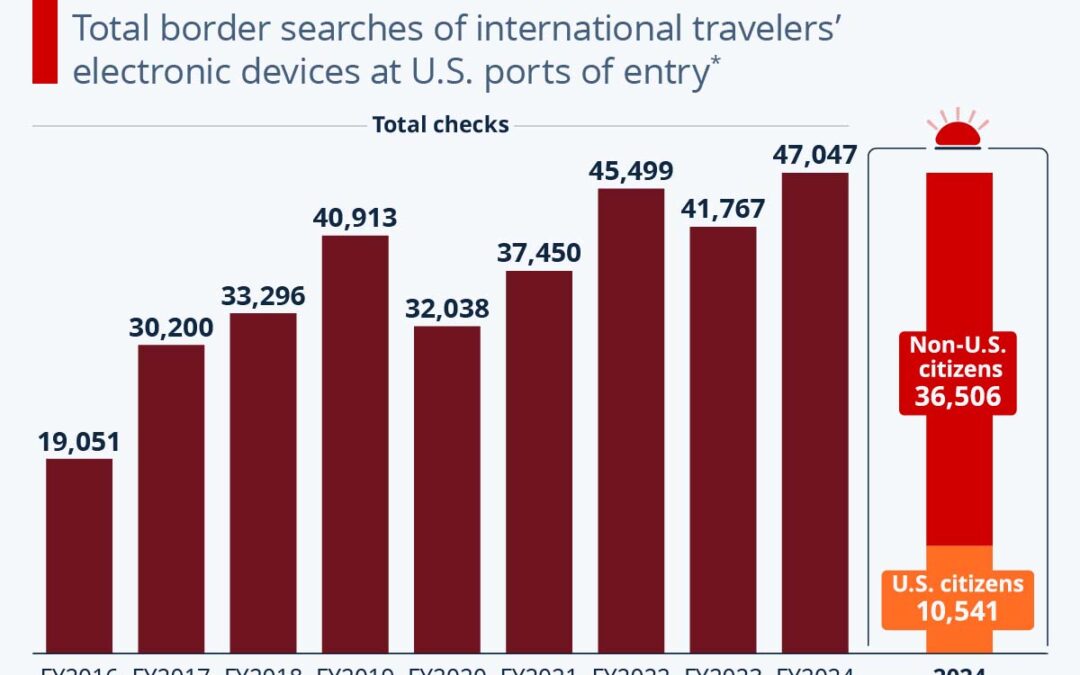
Non-U.S. citizens are more than three times as likely to have their electronic devices inspected at the U.S. border compared to U.S. passport holders. According to data from U.S. Customs and Border Protection, of the 47,047 electronic device searches conducted during fiscal year 2024, 36,506 involved non-U.S. citizens, while 10,541 involved U.S. citizens.
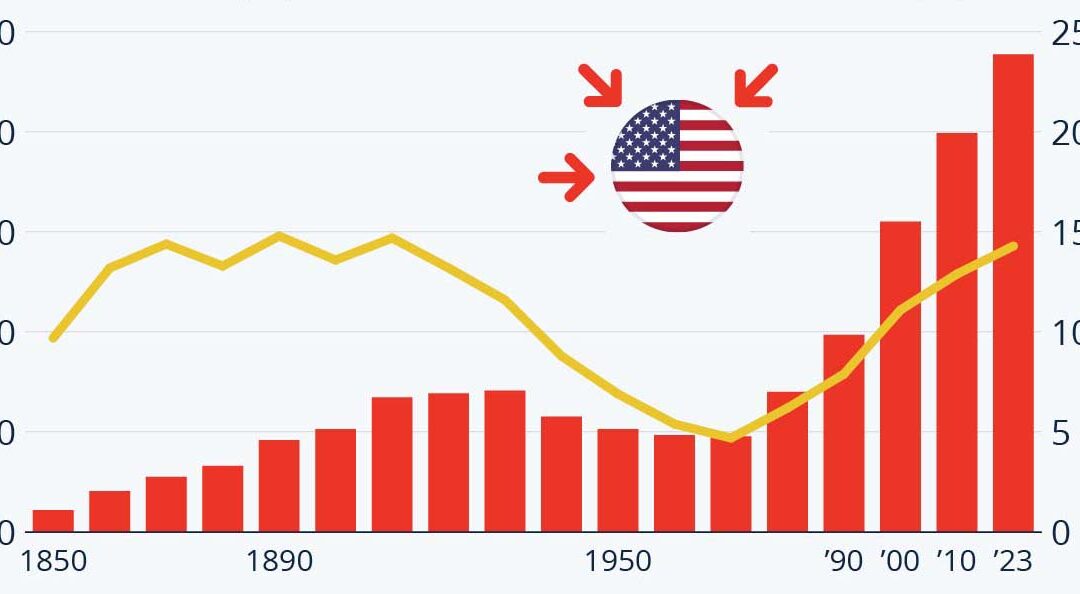
Although the number and proportion of immigrants in the U.S. have generally increased, the current level of the foreign-born population is not without precedent. As of 2023, 14.3% of the U.S. population was foreign-born, according to U.S. Census data.

As pandemic patterns of U.S. population growth are now normalizing, three economically successful states are shrinking. According to a December release by the Census Bureau, California, Illinois and New York, as well as West Virginia, Louisiana, Pennsylvania, Hawaii and Oregon, all lost population in 2023 compared to 2022.
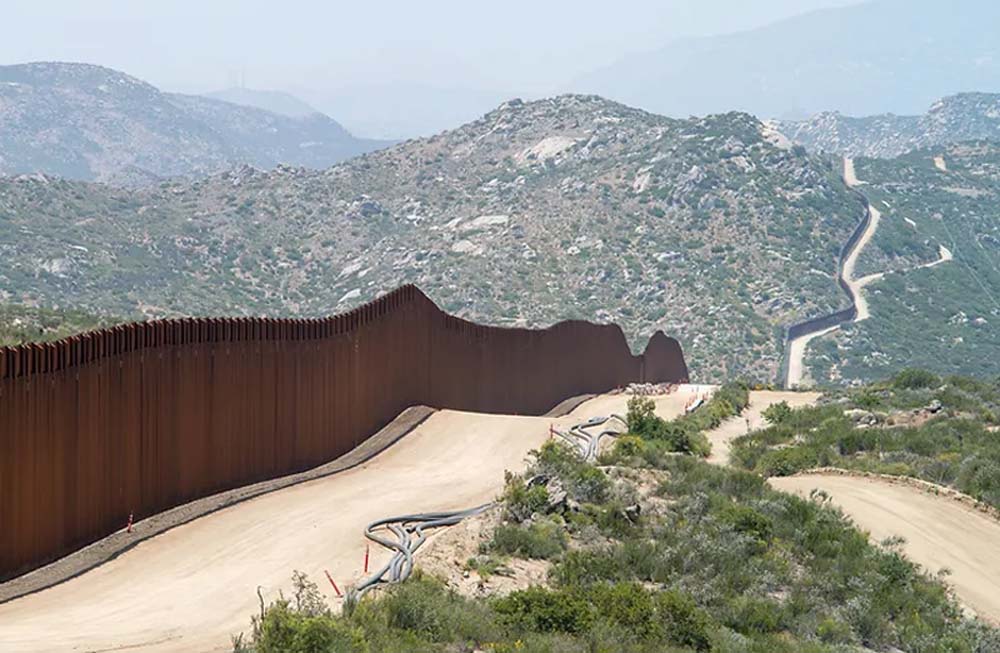
The past couple of fiscal years have seen new record numbers of migrant encounters at the U.S. – Mexico border, counting both migrants that have been apprehended as well as those asking to enter legally but deemed inadmissible. The following chart shows the number of migrant encounters at the U.S. – Mexico border for each fiscal year since 2013.
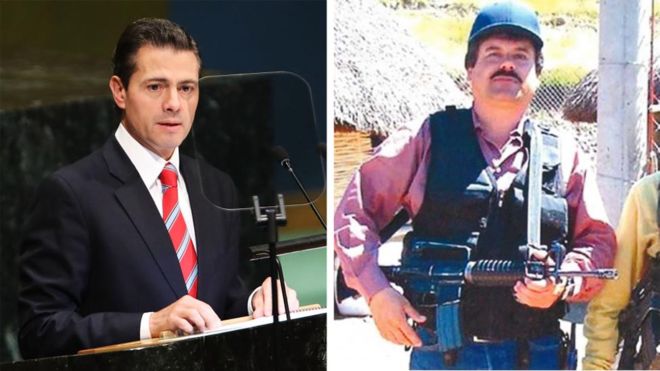
You may have heard the headline, “Mexican President calls for New Marshall Plan for Central America.” Presidential-hopeful Julio Castro echoes similar sentiment during first Presidential debate. So the question to debate, “Do we really want to put U.S. dollars into the likes of these Central American Presidents?” Let’s have a looks at some of the headlines surrounding several Central American leaders.
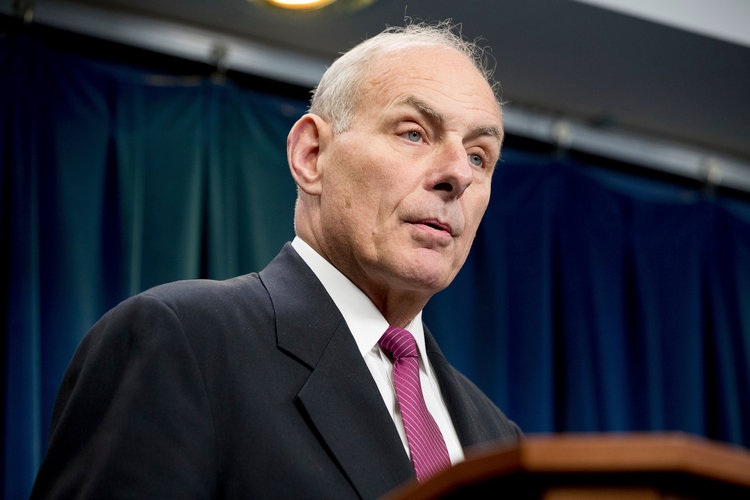
On February 20, 2017 the Secretary of the Department of Homeland Security (DHS) issued two companion Memoranda to Implement the President’s Executive Orders issued on January 25, 2017. In the Memorandum titled Enforcement of the Immigration Laws to Serve the National Interest DHS provided the following guidance:










